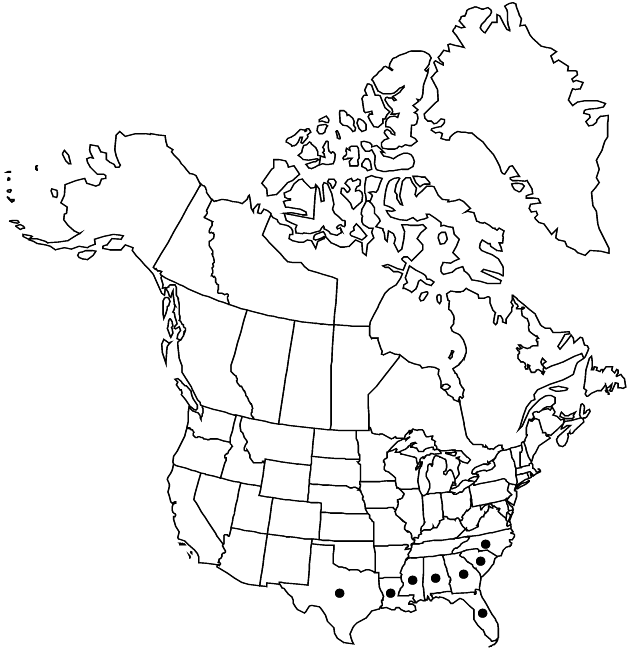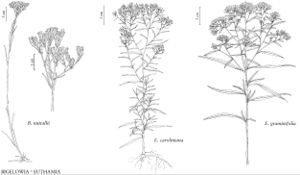Bigelowia nuttallii
Sida 3: 460. 1970.
Plants with rhizomelike caudex branches (becoming colonial or loosely matted). Leaves linear, (3–) 6–14 × 1–2 mm, bases persistent (± sheathing branches of caudices). Involucres 5–8 mm. 2n = 18, 36, 54.
Phenology: Flowering Sep–Oct(–Nov).
Habitat: Sandstone and siltstone substrates, often over outcrops, also commonly in sand and sandy-loam, rarely over gneiss, dry habitats to wet savannas or seepage slopes
Elevation: 100–300 m
Distribution

Ala., Fla., Ga., La., Miss., N.C., S.C., Tex.
Discussion
The geographic distribution of Bigelowia nuttallii is discontinuous, skipping from its area of greatest abundance in Texas and central Louisiana to scattered sites in northeastern Alabama, Georgia, and Florida (where partially sympatric with B. nudata var. nudata). Polyploids are known in populations in Georgia and Florida and are morphologically indistinguishable from the diploids.
Selected References
None.
Lower Taxa
"[" is not declared as a valid unit of measurement for this property."]" is not declared as a valid unit of measurement for this property.
